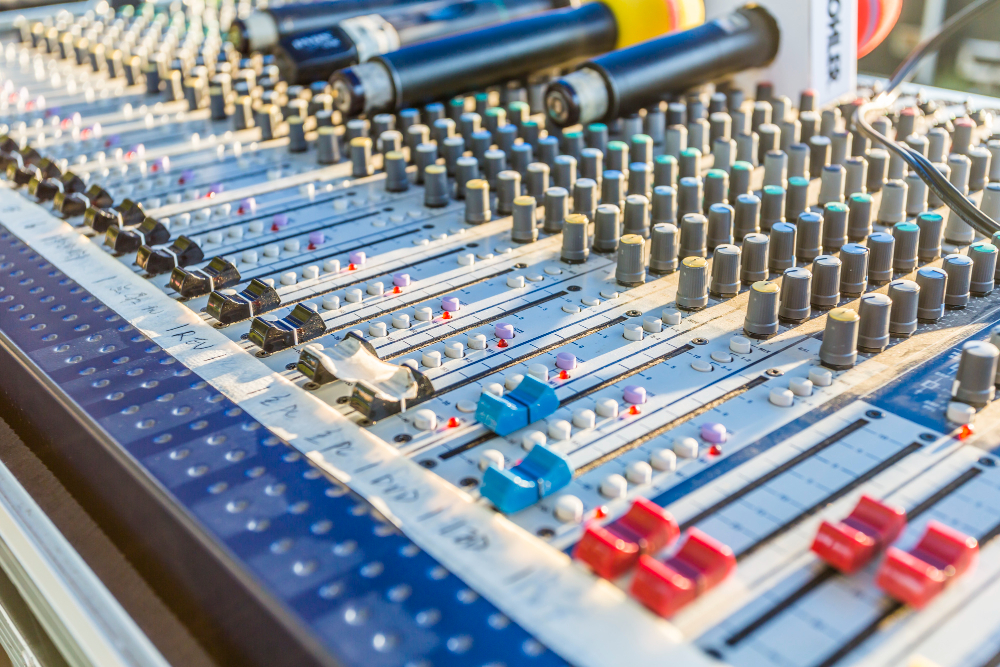Essential Audio Components for a Successful Event

Planning an event involves many moving parts, but one element you simply can't overlook is audio. Whether you're hosting a small corporate function, a wedding, or a large outdoor festival, the quality of sound at your event can make or break the experience. Many people underestimate the importance of audio setup until they’re faced with muffled speeches, inaudible performers, or uneven sound distribution.
If you're in Central Florida and have considered sound reinforcement systems for your next event, this guide is for you. We'll break down the key audio components you need to keep in mind to ensure every guest hears every word, beat, and note perfectly.
Why Quality Audio Systems Matter
Imagine a keynote speaker addressing an audience, but the microphone keeps cutting out. Or think about a DJ whose music barely reaches the crowd at a large venue. Moments like these can leave a poor impression on your attendees and tarnish the reputation of your event.
Investing in the right sound reinforcement systems is more than just a technical detail; it’s a fundamental part of creating an immersive and enjoyable environment. By prioritizing audio quality, you ensure inclusivity, professionalism, and engagement.
What Are Sound Reinforcement Systems?
Sound reinforcement systems are essentially setups designed to amplify and distribute sound evenly across a defined area. These systems include microphones, speakers, amplifiers, and other audio processing equipment. The goal is to make sure every sound is clear and adequately heard, no matter where someone is seated or located within the venue.
Now that we’ve established their importance, let's explore the audio components you should consider for your event.
Key Audio Components for Events
1. Microphones
Microphones might seem straightforward, but choosing the right type can make a massive difference.
- Dynamic Microphones
These are great for live performances and handling noisy environments. They're highly durable and resistant to background noise.
- Condenser Microphones
Ideal for capturing detailed sound in quieter settings, such as keynote speeches or panel discussions.
- Wireless Microphones
For maximum flexibility, wireless mics are an excellent choice, allowing presenters or performers to move freely without the constraint of cables.
2. Speakers
Speakers are the backbone of any sound reinforcement system. They project sound to your audience, so getting the right type for your venue is key.
- Main Speakers
These are placed to cover the general audience area. For large spaces, line array speakers are a popular choice because they distribute sound evenly.
- Monitor Speakers
Essential for performers or speakers on stage to hear themselves clearly. These are typically placed on the floor, facing toward the stage.
- Subwoofers
If music is a key part of your event, don’t forget subwoofers! They enhance the bass frequencies and add depth to the audio experience.
3. Mixing Console
A mixing console (or soundboard) lets you manage audio input and output levels. This is critical for maintaining the balance between microphones, instruments, and other audio sources.
For most events, you'll want a professional audio engineer to operate the mixing console to adjust levels in real time and address any audio issues immediately.
4. Amplifiers
Amplifiers boost the signal from the audio source (like a microphone or mixing board) to the speakers. The size and type of your venue dictate how powerful your amplifiers need to be. Underpowered amps can lead to weak sound, while overpowered amps can damage your speakers.
5. Cables and Connectors
It’s easy to overlook cables, but bad cabling can ruin an otherwise flawless setup. Use durable XLR and TRS cables for the best performance and minimal interference.
6. Audio Processors and Equalizers
Audio processors and equalizers allow you to fine-tune sound quality by adjusting frequencies. They can eliminate feedback, reduce noise, and enhance vocal clarity, creating a much smoother listening experience overall.
7. PA System
A Public Address (PA) system is indispensable for announcements and speeches, whether during corporate events, weddings, or festivals. These systems ensure everyone hears critical information clearly, no matter how bustling the environment may be.
8. Acoustics Considerations
Don’t forget acoustics. The materials and design of your venue impact how sound travels. For example, outdoor venues can disperse sound more easily, while indoor spaces with hard surfaces may cause echo. Acoustic panels and strategic speaker placement can help manage these issues.
Tailoring Your Setup to the Venue
The type of venue heavily influences your sound system design. Here are some examples of how to adapt based on location:
- Small Indoor Spaces
For corporate meetings or intimate weddings, compact microphones and speakers often suffice. A two-speaker setup with a mixing console is usually enough.
- Large Outdoor Spaces
Large areas require powerful line array speakers and subwoofers to project sound across open spaces. Wind can also disrupt outdoor audio, so use windshields on microphones.
- Concerts and Performances
Live performances benefit from dynamic microphones, stage monitors, and robust PA systems. Ensure you have backup equipment in case of technical issues.
How Sound Reinforcement Systems Set Your Event Apart
The way audio is handled can elevate an event from "good" to "unforgettable." Pristine sound clarity creates a more immersive environment, allowing your audience to stay engaged and thoroughly enjoy the experience. Professional sound reinforcement systems also reflect positively on your event planning skills, underscoring your commitment to quality.
Working with an Audio Professional
While understanding the basics of audio systems is essential, working with a professional ensures your setup is both efficient and flawless. Experienced audio engineers assess your specific requirements, choose the perfect components, and ensure everything runs smoothly on event day.
Looking for the Best Sound Reinforcement Systems in Central Florida?
If you're organizing an event and need high-quality audio solutions, Axiom Integration can help. We specialize in providing cutting-edge sound reinforcement systems in Central Florida. From expert curation to seamless setup, we've got you covered.
Contact Axiom Integration today to get your free quote and ensure your next event sounds as amazing as it looks.